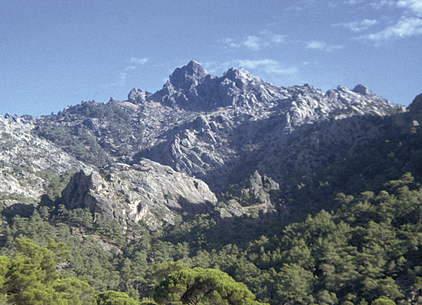
















The Holy Mountain
Rising up to nearly 1400 m, the Latmos was one of Asia Minor’s holy mountains. On its peak, visible from all sides, known as Tekerlekdağ in Turkish, the Anatolian weather god was probably venerated from the Neolithic period onwards. He was later succeeded by Zeus, the weather god of the Greeks. The mountain peak was the site of an age-old stone and rain cult (1-3). Even in the Middle Ages, processions were still made to the peak in periods of severe drought to beg for rain. Also in our days villagers still undertake in very dry years processions to pray for rain.
Apart from the weather deity, an indigenous mountain god was worshipped who came from the mountain world of the Latmos with its numerous caves and who was to live on in Greek mythology as the young shepherd and hunter Endymion, the lover of the moon goddess Selene. This myth remained a favourite subject of the visual arts from antiquity to modern times (4-5).
Weather and mountain deities are closely linked in Anatolia (6). They were venerated together in some places, occasionally even equated with each other.
Rising up to nearly 1400 m, the Latmos was one of Asia Minor’s holy mountains. On its peak, visible from all sides, known as Tekerlekdağ in Turkish, the Anatolian weather god was probably venerated from the Neolithic period onwards. He was later succeeded by Zeus, the weather god of the Greeks. The mountain peak was the site of an age-old stone and rain cult (1-3). Even in the Middle Ages, processions were still made to the peak in periods of severe drought to beg for rain. Also in our days villagers still undertake in very dry years processions to pray for rain.
Apart from the weather deity, an indigenous mountain god was worshipped who came from the mountain world of the Latmos with its numerous caves and who was to live on in Greek mythology as the young shepherd and hunter Endymion, the lover of the moon goddess Selene. This myth remained a favourite subject of the visual arts from antiquity to modern times (4-5).
Weather and mountain deities are closely linked in Anatolia (6). They were venerated together in some places, occasionally even equated with each other.











































